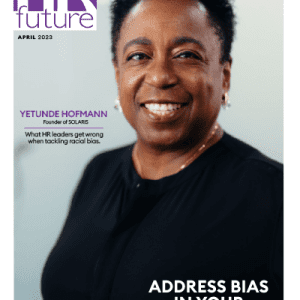As things move at an ever-increasing pace, there’s good news and bad news for dedicated HR professionals. Do you want to be a transactional or a strategic HR professional? is a critical question to be asking yourself.
The good news is that, whereas in the past, HR was traditionally seen as a support function primarily focused on administrative tasks and employee management, it is rapidly taking its place as a strategic partner that plays a critical role in driving organisational success. This necessitates a shift from transactional HR to strategic HR practices. The bad news is that, if you’re looking for a comfortable spot in HR, you’re not going to find what you’re looking for!
Here, then, are some practical strategies for HR professionals to embrace a more strategic role within their organizations.
Understand The shift
Transactional HR focuses on routine activities such as payroll processing, benefit administration, and compliance matters. While these tasks are very necessary for ensuring operational efficiency and regulatory compliance, they generally consume a significant portion of time and resources, leaving little time for strategic initiatives.
Strategic HR, on the other hand, involves aligning HR practices with the company’s broader business objectives, leveraging human capital to drive innovation, growth in order to ensure a sustainable competitive advantage. This paradigm shift requires HR professionals to become a lot more proactive and, indeed, innovative, focusing on the company’s long-term organisational goals rather than just the day-to-day operations of the HR department.
How to make The Transition:
Align your HR Initiatives with the business’s objectives
If you want to operate strategically, you have to develop a deep understanding of your organisation’s strategic priorities. I encourage you, therefore, to start collaborating closely with senior leaders to identify key business goals so that you can align any HR initiatives with these.
This applies to all of the HR functions, such as talent acquisition, performance management, leadership development, engagement, retention, and so forth. In fact, you would be very smart if you were to ensure that every HR programme directly contributes to advancing the organisation’s purpose and its business goals.
Embrace Data-Driven Decision-Making
In the era of big data, HR has access to a wealth of information that can inform strategic decision-making. By leveraging people analytics and HR metrics, HR professionals can gain insights into workforce trends, employee engagement levels, and performance drivers. This data-driven approach enables HR to identify areas for improvement, anticipate future talent needs, and make informed recommendations to leadership.
Nurture a culture of continuous learning
As the nature of work continually evolves, employees need to, in turn, continuously update and upgrade their skills to stay not only relevant but ahead of the game. Strategic HR, therefore, plays a key role in nurturing a culture of learning and development within your organisation.
That means you proactively identify and design training programs, mentoring, and coaching initiatives, as well as career pathways that equip and empower employees to grow professionally.
No astute investor expects a return on an investment they never made. By investing in the growth and development of your employees, you will not only enhance your talent pool but also create a personalised employee experience, resulting in greater employee engagement and retention.
Champion Diversity, Equity, Inclusion and Belonging (DEIB) initiatives
Diversity, equity, and inclusion have moved from the “nice to have” fringes of business practice to become central pillars of modern HR strategy. Strategic HR professionals therefore recognise the value of a diverse workforce in driving innovation and nurturing a culture of belonging.
By implementing inclusive hiring practices, promoting diversity at all levels of the organization, and nurturing a culture of respect and fairness, you can create a more vibrant and high-performing workplace. It’s said that equity is inviting everyone to the dance, but inclusion is asking them to dance. Make sure you create a workplace where everyone is asked to dance!
Measure and communicate the impact of your HR strategies
To demonstrate the value of your HR initiatives, you must make a point of measuring their impact on key business outcomes. Measure things like reduced turnover rates, improved employee productivity, and enhanced customer satisfaction.
By tracking relevant metrics and communicating their results to senior leadership, you quantify the ROI of HR investments. That will position you to secure greater support and resources to drive your strategic initiatives even further forward.
Conclusion
Transitioning from transactional HR to strategic HR results in a fundamental shift in the role and mindset of HR professionals. As you align HR practices with the company’s business objectives, leverage data-driven insights, nurture a culture of learning and inclusion, and measure their impact, you will unlock the full potential of your human capital and gain a competitive edge in today’s highly competitive marketplace. As you continue to expand your strategic partnership, you will play a key role in shaping the future success of your organisation.
And that’s what strategic HR’s all about!
Alan Hosking is the publisher of HR Future magazine, www.hrfuture.net and @HRFuturemag. He is an internationally recognised authority on leadership competencies for the future and teaches experienced and younger business leaders how to lead with empathy, compassion, integrity, purpose, and agility. He has been an age management coach for two decades and is the author of the parenting best seller What Nobody Tells a New Father.







